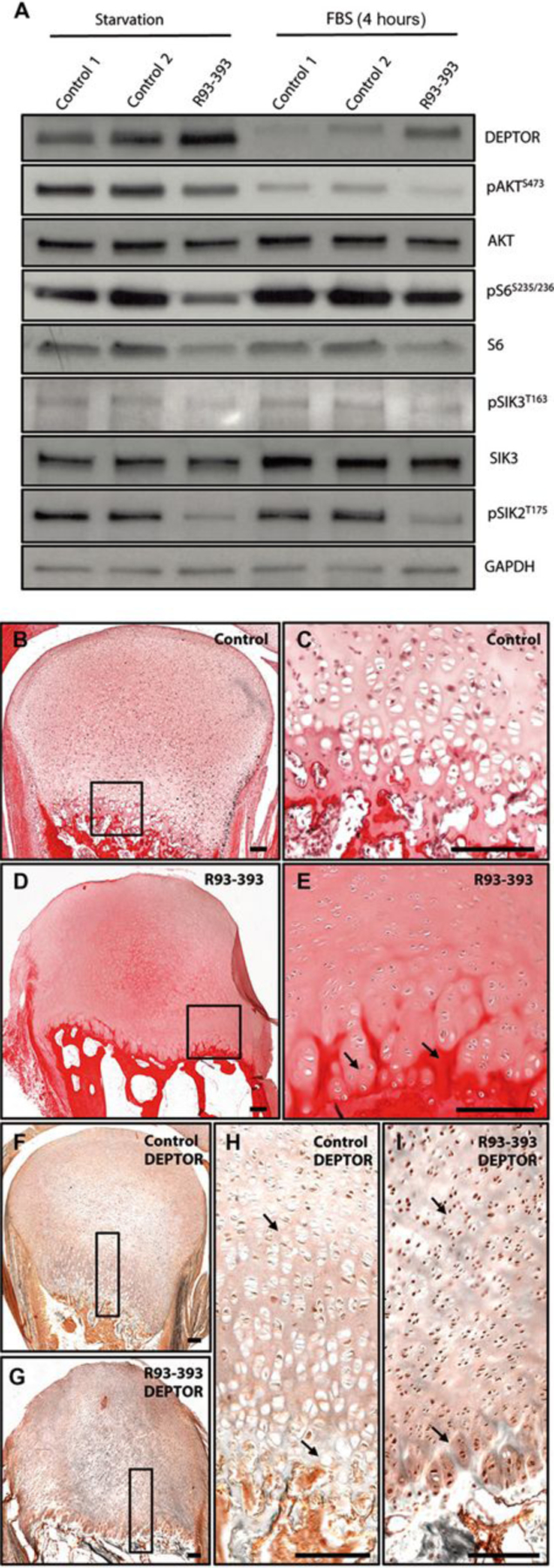Figure 5.

PTH/PTHrP signaling regulates mTOR activity through SIK3 mediated DEPTOR degradation. (A) JMC derived chondrocytes were starved O/N and then treated with 10% FBS for 4 h. Western blots showing amounts of indicated proteins in patient and control cells. (B-E) Picrosiriuos Red-Haematoxylin staining of control (B-C) and JMC patient (D-E). (F-I) Immunolocalization of DEPTOR in control (F, H) and patient growth plates (G, I). (J) Model of action of SIK3. Different upstream signals control SIK3 activity. Under nutrient deficiency DEPTOR inhibits mTORC1 and mTORC2. Serum stimulation activates SIK3 and promotes DEPTOR interaction with β-TRCP inducing its degradation by the proteasome. In the absence of PTH/PTHrP, SIK3 triggers DEPTOR degradation through the same mechanism. PTH/PTHrP binding to its receptor (PTH1R) inhibits SIK3 phosphorylation and therefore its activity, inducing DEPTOR accumulation and subsequent mTOR inhibition.
